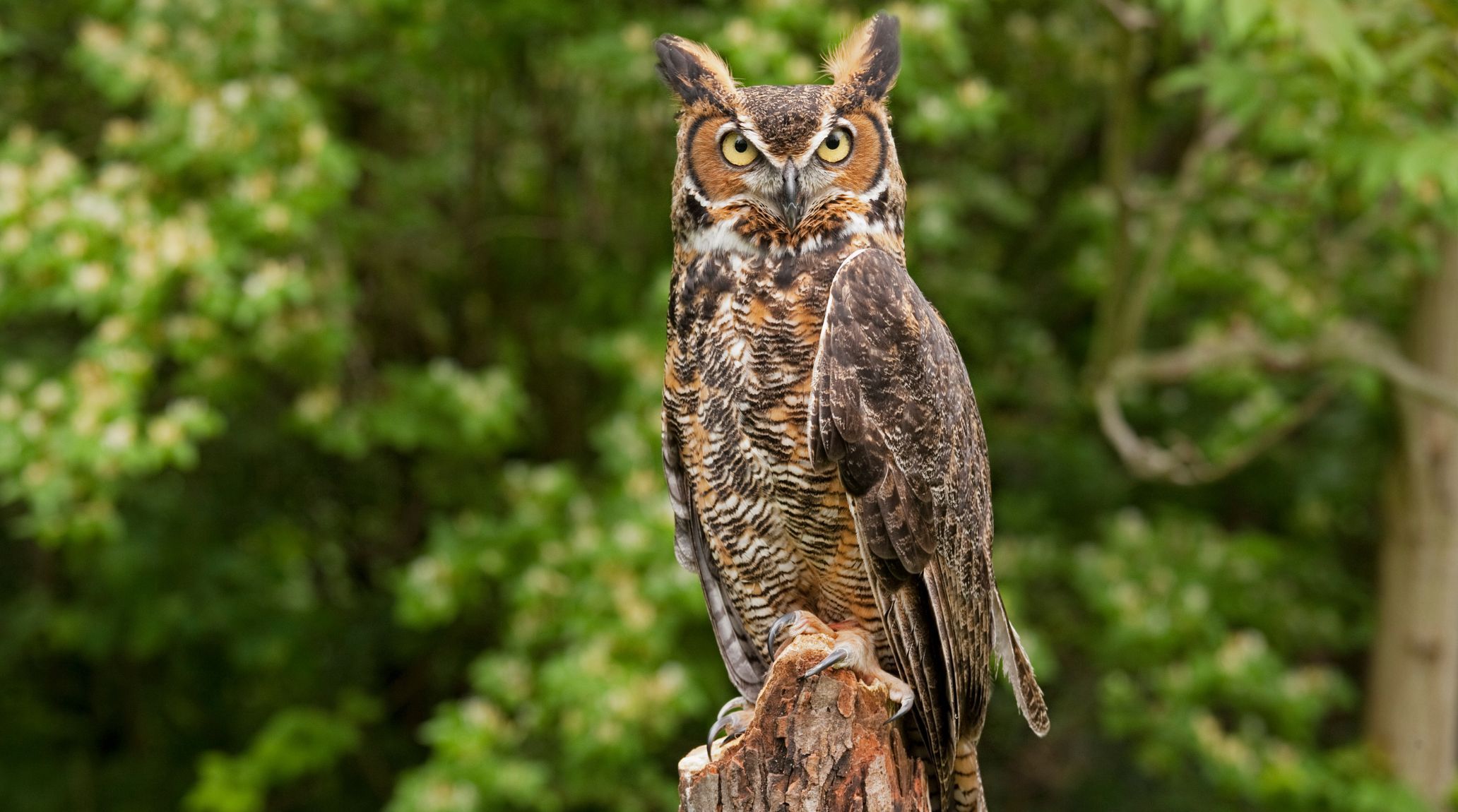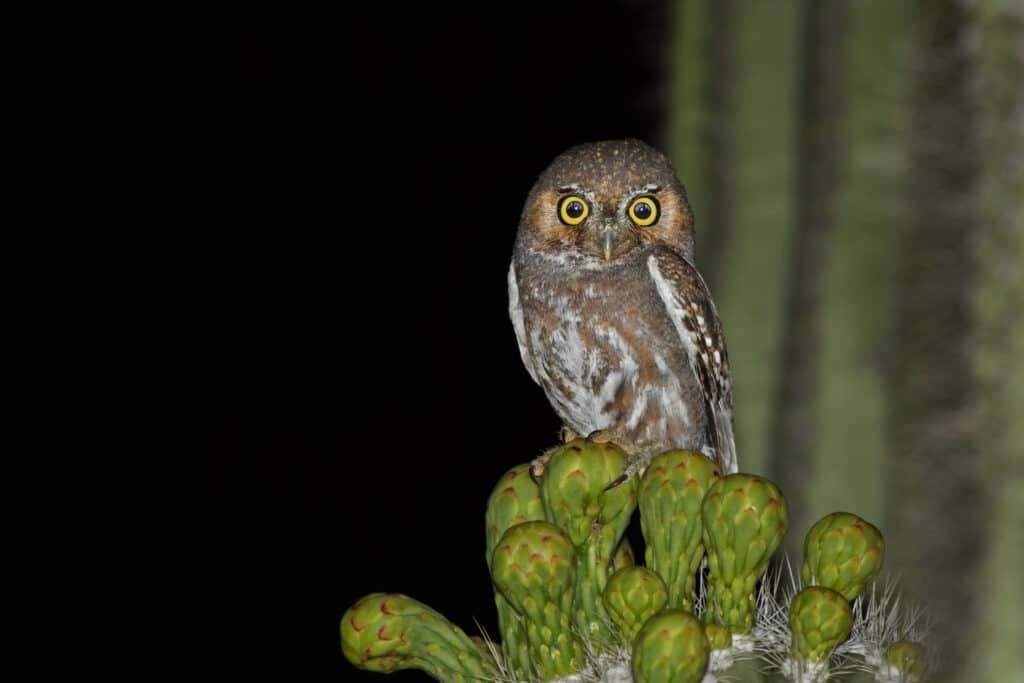
“
Owls are fascinating birds that have captivated humans for centuries with their mysterious appearance and intriguing behaviors. These nocturnal creatures are often seen as symbols of wisdom and knowledge. In this blog, we'll explore 20 captivating owl facts that will delight you.1
1
”
One of the most amazing things about owls is their ability to fly silently. This phenomenon is due to their special feather structure, which reduces noise and allows them to sneak up on their prey without being heard. 1
Owls can rotate their heads 270 degrees! Since owls are birds, they don't experience pregnancy. Instead, the female lays eggs and incubates them for about 30 to 35 days, depending on the species, until they hatch. 2
Owls have ears that are positioned at different heights on their heads. This unique feature helps them to pinpoint the exact location of sounds, making them excellent hunters even in complete darkness. 3
Unlike humans, owls can't move their eyes from side to side because their eyes are fixed in their sockets. Instead, they rotate their entire head to see. This gives them excellent binocular vision, crucial for hunting in low light. 4
When an owl catches its prey, it swallows it whole! Later, itc pellets containing bones, fur, and other undigested parts. Scientists often examine these pellets to study the owl's diet and local ecosystem health. 5
Most birds have three toes pointing forward and one backward, but owls have two toes pointing forward and two backward. This zygodactyl foot arrangement helps them to grasp and kill their prey more effectively. 6
Female owls are generally larger than their male counterparts. This size difference helps them perform essential tasks such as hunting and nesting more effectively. Despite their size, both male and female owls play crucial roles in their ecosystem.7
When you think of an owl's voice, you might imagine a gentle hoo-hoo. However, not all owls sound the same! The great horned owl is famous for its hoot, but the barn owl lets out a harsh screech like a squeaky door, and the barred owl sounds more like a horse's neigh than a bird. 8
Owls generally have a lifespan of 10 to 15 years in the wild, though some species can live longer. In captivity, with proper care, they can live up to 20 years or more, depending on the species and environmental factors. 9
Owls live on every continent except Antarctica. They can be found in a variety of habitats, including forests, deserts, and tundras. This wide distribution showcases their adaptability to diverse environmental conditions. 10
The European eagle owl (Bubo bubo) is the largest owl, reaching 66-71 cm in length, weighing 1.6-4 kg, and boasting a wingspan over 1.5 m. It has been known to prey on small animals, including cats.11
Some owl species have been observed using tools to hunt for food. For example, the Burrowing Owl uses dung to attract beetles, which it then eats. This behavior demonstrates their intelligence and adaptability in finding food.12
Depending on their species and habitat, owls can come in a variety of colors, including brown, gray, white, and even reddish hues. This coloration helps them to camouflage and blend in with their surroundings, protecting them from predators and aiding in hunting. 13

The tiniest owl in the world is the Elf Owl, standing just 5-6 inches tall and weighing only 1½ ounces. On the other hand, the Great Gray Owl can reach up to 32 inches in height, making it the largest North American owl in appearance.
The earliest known owl, Berruornis orbisantiqui, lived around 57–60 million years ago during the Palaeocene epoch. Fossils found in northeastern France reveal it was similar in size to today's largest eagle owls, the biggest owls alive today. 14
Young owls are known as owlets. They are often covered in fluffy down feathers and rely on their parents for food until they can hunt on their own. Owlets go through a rapid growth phase and learn essential survival skills from their parents. 15
Owls have three eyelids: one for blinking, one for sleeping, and a third, called the nictitating membrane, which cleans and protects their eyes. This third eyelid sweeps across the eye, keeping it moist and clear of debris. 16
Most owl species are solitary and prefer to live and hunt alone. But Boreal Owls can be quite the romantics when food is abundant. During "fat years" with plenty of mice, these usually monogamous owls have been seen with multiple partners, both males and females! 17
While many owls stay in the same area year-round, some species, like the Snowy Owl, migrate long distances to find food and suitable nesting sites. Changes in prey availability and environmental conditions often drive these migrations. 18
There are about 250 species of owls worldwide, but not all are thriving. Some, like the snowy owl and the spotted owl, are at risk and need our help to survive. Conservation efforts are crucial to protect these magnificent birds. 19


